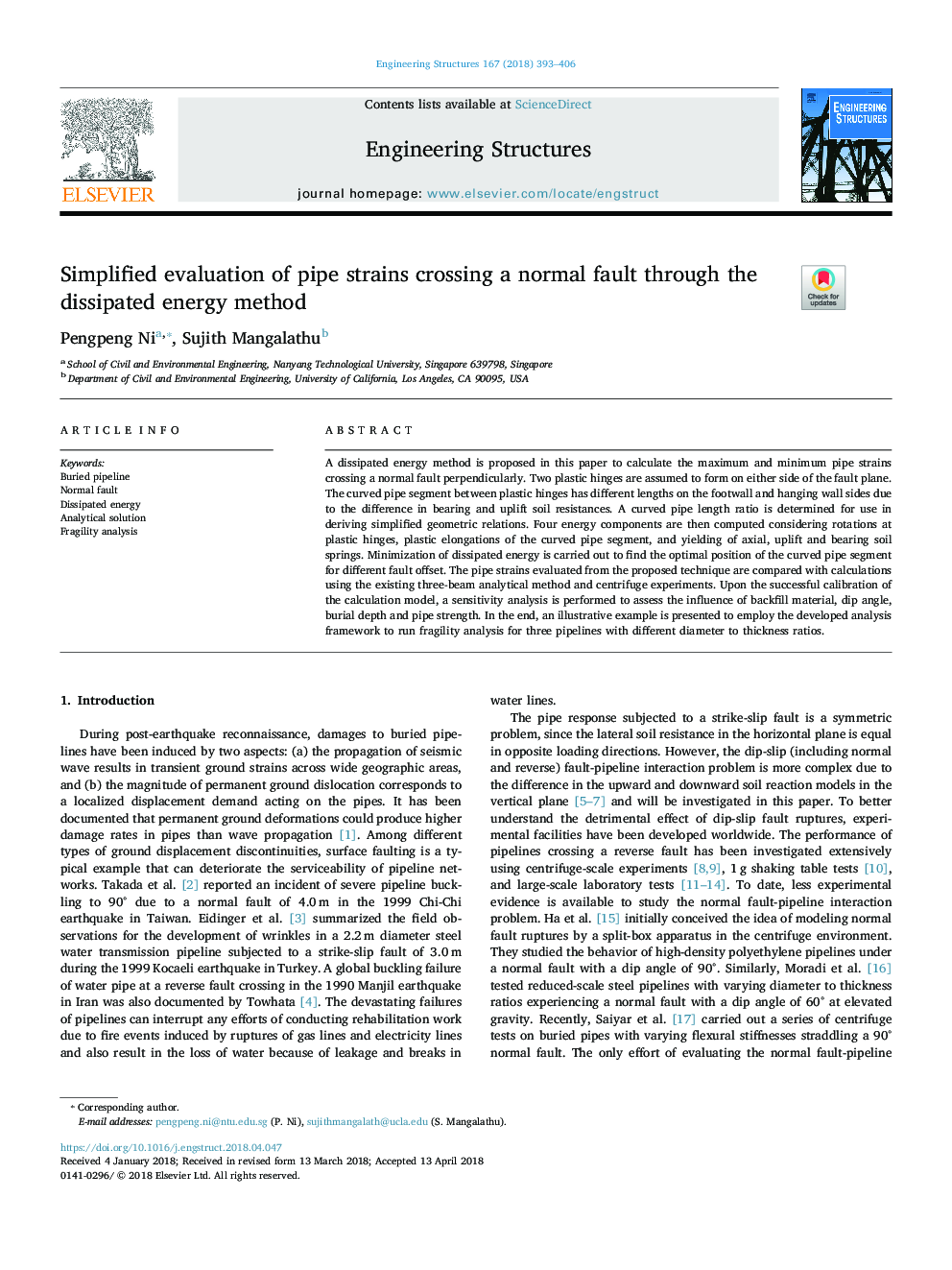| Article ID | Journal | Published Year | Pages | File Type |
|---|---|---|---|---|
| 6737108 | Engineering Structures | 2018 | 14 Pages |
Abstract
A dissipated energy method is proposed in this paper to calculate the maximum and minimum pipe strains crossing a normal fault perpendicularly. Two plastic hinges are assumed to form on either side of the fault plane. The curved pipe segment between plastic hinges has different lengths on the footwall and hanging wall sides due to the difference in bearing and uplift soil resistances. A curved pipe length ratio is determined for use in deriving simplified geometric relations. Four energy components are then computed considering rotations at plastic hinges, plastic elongations of the curved pipe segment, and yielding of axial, uplift and bearing soil springs. Minimization of dissipated energy is carried out to find the optimal position of the curved pipe segment for different fault offset. The pipe strains evaluated from the proposed technique are compared with calculations using the existing three-beam analytical method and centrifuge experiments. Upon the successful calibration of the calculation model, a sensitivity analysis is performed to assess the influence of backfill material, dip angle, burial depth and pipe strength. In the end, an illustrative example is presented to employ the developed analysis framework to run fragility analysis for three pipelines with different diameter to thickness ratios.
Related Topics
Physical Sciences and Engineering
Earth and Planetary Sciences
Geotechnical Engineering and Engineering Geology
Authors
Pengpeng Ni, Sujith Mangalathu,
